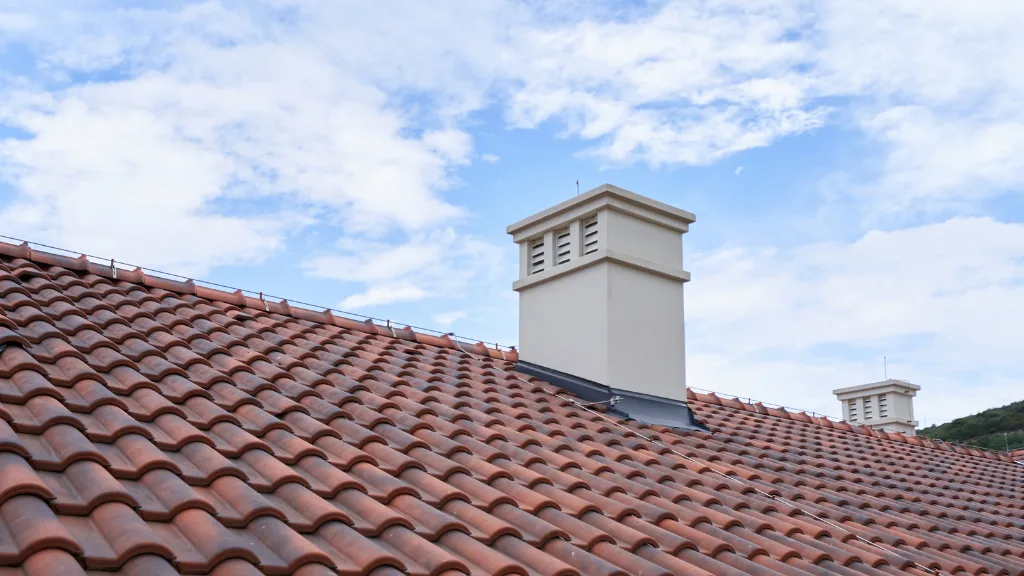
If you’re considering a new roof for your home, polymer roofing might be a material worth exploring. Polymer roofing is an innovative option that offers both durability and aesthetic appeal.
But, like any roofing material, it has its own set of pros and cons. In this article, we’ll delve into the advantages and disadvantages of polymer roofing. We’ll explore its resistance to extreme weather conditions, its lightweight properties, and its eco-friendliness, as well as some of the potential drawbacks, such as the cost and installation process.
Whether you’re a homeowner looking for a new roofing option or a contractor searching for a material to offer your clients, our guide has got you covered. So, let’s dive in and learn more about the pros and cons of polymer roofing!
Pros of Polymer Roofing
If you are considering installing a new roof, polymer roofing is a great option to consider. Here are some of the pros of polymer roofing:
Lightweight
Polymer roofing is lightweight, which makes it easy to install and handle. It is much lighter than traditional roofing materials like slate or tile, which can be heavy and difficult to transport and install.
Durable
Polymer roofing is highly durable and can last for many years. It is resistant to impact and fire, which makes it a great option for areas prone to storms and wildfires.
It is also resistant to decay and insects, which means you won’t have to worry about replacing your roof due to damage caused by pests.
Longevity
Polymer roofing has a long lifespan, which means you won’t have to replace your roof as often as you would with other materials. It can last twice as long, or even longer, than traditional roofing options.
Aesthetic Appeal
Polymer roofing comes in a variety of styles and colors, which means you can choose a look that complements your home’s architecture and style. It can mimic the look of other roofing materials like slate or tile, but without the weight and cost.
Energy Efficiency
Polymer roofing is an excellent insulator, which means it can help keep your home cooler in the summer and warmer in the winter. This can help reduce your energy bills and make your home more comfortable.
Overall, polymer roofing is a high-quality product that offers many benefits. It is lightweight, durable, long-lasting, and energy-efficient, and it comes in a variety of styles and colors to suit your aesthetic preferences.
Cons of Polymer Roofing
When considering polymer roofing for your home, it is important to weigh the potential downsides. Here are some cons to keep in mind:
Upfront Cost
Polymer roofing can be more expensive than traditional asphalt shingles upfront. While the cost varies depending on the specific type of polymer roofing you choose, you should expect to pay more for this material than you would for asphalt shingles.
Installation Cost
The installation of polymer roofing can also be more expensive than other roofing materials. This is because it requires specialized installation techniques and tools.
Therefore, it is important to get a quote from a professional roofing contractor to ensure that you are aware of the installation costs.
Maintenance
While polymer roofing is generally low maintenance, it can still require some upkeep. For example, you may need to clean debris from your roof periodically to ensure that it drains properly.
Additionally, if you live in an area with heavy snowfall, you may need to remove snow from your roof to prevent damage.
Warranties
While polymer roofing is generally durable, the warranties offered by manufacturers can be limited. Some warranties may only cover defects in the material for a certain number of years, while others may not cover damage caused by extreme weather conditions.
Roof Replacement
If you need to replace your polymer roof, it can be more difficult and costly than replacing other types of roofing materials. This is because polymer roofing cannot be recycled and must be disposed of in a landfill.
dditionally, the specialized installation techniques required for polymer roofing can make replacement more expensive.
Overall, while polymer roofing has many benefits, it is important to consider the potential downsides before making a decision. By weighing the pros and cons, you can make an informed decision about whether polymer roofing is the right choice for your home.
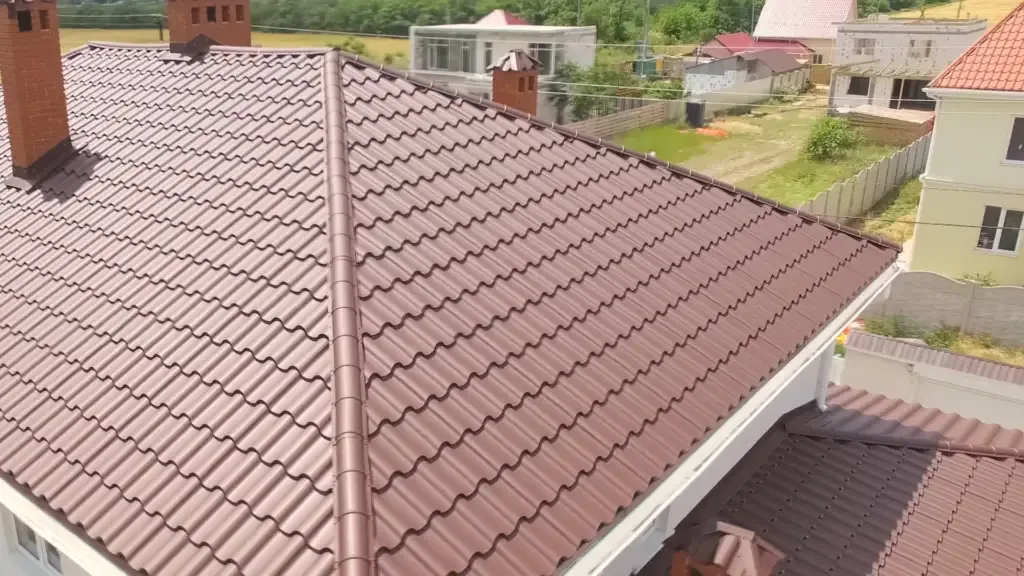
Comparison with Other Roofing Materials
When it comes to choosing the right roofing material, there are various options available in the market. Each material has its own set of advantages and disadvantages.
In this section, we will compare polymer roofing with other popular roofing materials such as asphalt shingles, metal roofing, cedar shake and wooden shingles, concrete and clay tiles.
Asphalt Shingles
Asphalt shingles are one of the most popular roofing materials in the United States. They are relatively inexpensive and easy to install.
However, they are not as durable as other roofing materials and have a shorter lifespan of around 20-30 years. They are also prone to cracking and fading over time. In comparison, polymer roofing is more durable and has a longer lifespan of around 50 years.
Metal Roofing
Metal roofing is another popular option for homeowners. It is known for its durability and longevity, with a lifespan of around 40-70 years. Metal roofing is also fire-resistant and energy-efficient, making it an ideal choice for environmentally-conscious homeowners.
However, it can be more expensive than other roofing materials, including polymer roofing.
Cedar Shake and Wooden Shingles
Cedar shake and wooden shingles are popular for their natural look and aesthetic appeal. However, they require more maintenance than other roofing materials and are prone to rotting and insect damage.
They also have a shorter lifespan of around 20-30 years. In comparison, polymer roofing requires minimal maintenance and is more durable, with a lifespan of around 50 years.
Concrete and Clay Tiles
Concrete and clay tiles are known for their durability and longevity, with a lifespan of around 50-100 years. They are also fire-resistant and energy-efficient.
However, they can be heavy and require additional structural support, which can increase the overall cost of installation. In comparison, polymer roofing is lightweight and does not require additional structural support.
Overall, polymer roofing offers a durable, long-lasting, and low-maintenance option for homeowners. While it may be more expensive than some roofing materials, its longevity and durability make it a cost-effective choice in the long run.
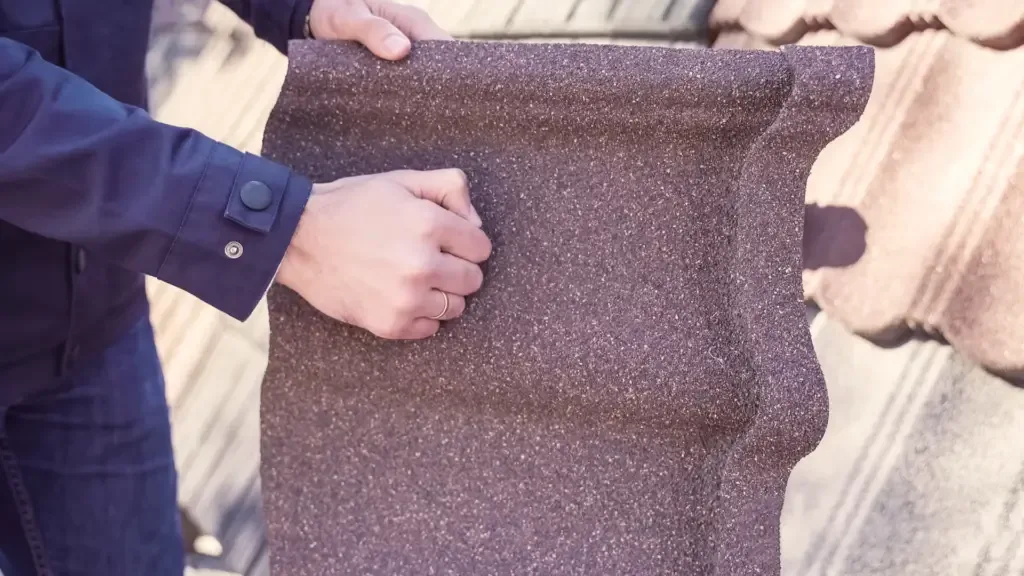
Environmental Impact
When it comes to the environmental impact of polymer roofing, there are several factors to consider. Here are some key points to keep in mind:
Recycled Materials
One of the biggest advantages of polymer roofing is that it can be made from recycled materials. This means that fewer resources are needed to produce the roofing material, and less waste is generated during the manufacturing process.
Additionally, using recycled materials can help to reduce the amount of waste that ends up in landfills.
Recyclable
In addition to being made from recycled materials, polymer roofing is also recyclable. This means that at the end of its useful life, the roofing material can be recycled and used to create new products.
This helps to reduce the environmental impact of the roofing material and can help to conserve natural resources.
Eco-Friendly
Polymer roofing is often considered to be an eco-friendly option because it is lightweight and durable. This means that less energy is required to transport and install the roofing material, and the roofing material itself is less likely to need to be replaced in the future.
Additionally, polymer roofing can help to reduce energy costs by reflecting sunlight and reducing the amount of heat that is absorbed by the building.
Environmental Issues
While polymer roofing is generally considered to be an eco-friendly option, there are still some environmental issues to consider. For example, the manufacturing process for polymer roofing can generate greenhouse gas emissions and other pollutants.
Additionally, if the roofing material is not properly disposed of at the end of its useful life, it can contribute to environmental problems such as litter and pollution.
Overall, when it comes to the environmental impact of polymer roofing, there are both pros and cons to consider. While the use of recycled materials and the recyclability of the roofing material are definite advantages, it is important to be aware of the potential environmental issues associated with the manufacturing and disposal of the roofing material.
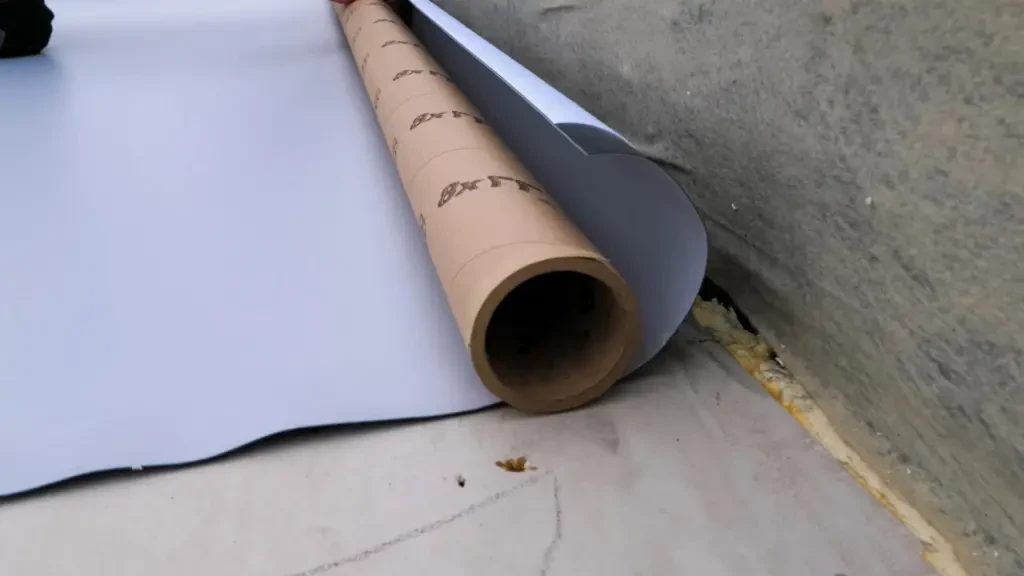
Maintenance and Repairs
Polymer roofing is known for its durability and resistance to harsh weather conditions. However, like any other roofing material, it still requires maintenance and occasional repairs to ensure its longevity.
Here are some tips to help you maintain and repair your polymer roof:
Regular Cleaning
Regular cleaning is essential to keep your polymer roof in good condition. Dirt, debris, and other organic materials such as leaves and moss can accumulate on the surface of the roof, leading to mold growth and water damage.
To clean your polymer roof, use a soft-bristled brush or a pressure washer with a low setting to remove any dirt and debris. Avoid using harsh chemicals or abrasive materials that can damage the surface of the roof.
Inspections
Regular inspections can help you detect any problems with your polymer roof before they become major issues. Inspect your roof at least twice a year, especially after severe weather events such as hailstorms or hurricanes.
Look for signs of damage, such as cracks, holes, or missing shingles. Check for any signs of moisture or leaks, such as water stains on the ceiling or walls.
Repairs
If you notice any damage to your polymer roof, it’s essential to repair it as soon as possible to prevent further damage. Depending on the extent of the damage, you may be able to repair it yourself or hire a professional roofing contractor to do the job.
Here are some common repairs you may need to make:
- Patching: If you have a small hole or crack in your polymer roof, you can patch it with a sealant or roofing cement.
- Shingle Replacement: If you have missing or damaged shingles, you can replace them individually.
- Flashing Repair: If the flashing around your roof vents or chimney is damaged, it can cause leaks. You may need to replace the flashing to fix the problem.
Prevention
Prevention is key to maintaining a healthy polymer roof. Here are some tips to prevent damage and prolong the life of your roof:
- Trim trees and remove branches that could fall on your roof during a storm.
- Keep gutters and downspouts clean to prevent water from backing up and causing damage.
- Install a moss prevention system to prevent moss and algae growth on your roof.
By following these maintenance and repair tips, you can ensure that your polymer roof lasts for many years to come.
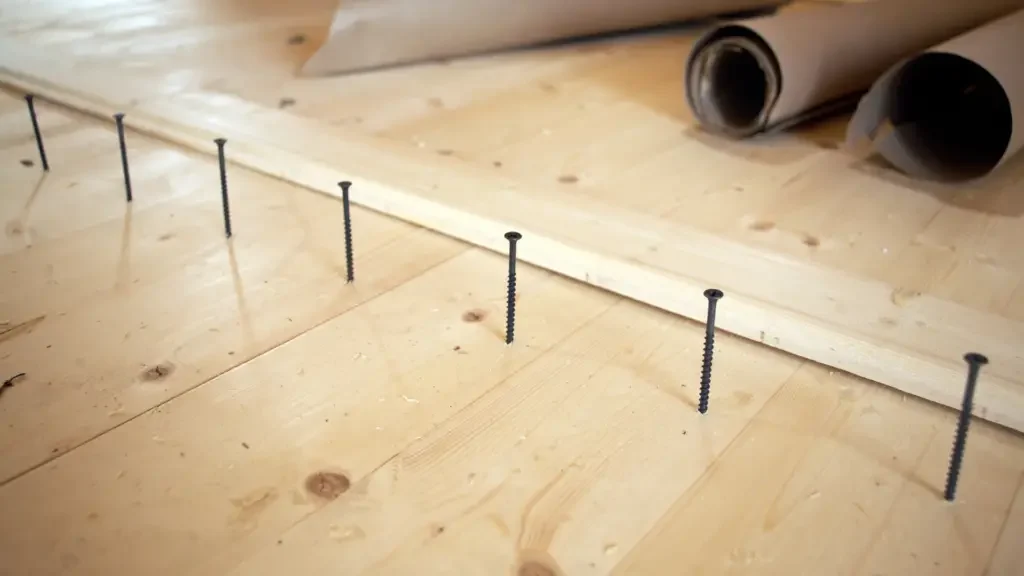
Costs and Investment
When considering polymer roofing, one of the most important factors to think about is the cost. Polymer roofing is generally more expensive than traditional asphalt shingles, but it also offers a range of benefits that can make it a worthwhile investment in the long run.
The cost of polymer roofing can vary depending on a number of factors, including the size and slope of your roof, the complexity of the installation, and the quality of the materials used.
On average, you can expect to pay between $8 and $12 per square foot for polymer roofing, which is significantly more than the $3 to $5 per square foot you might pay for traditional asphalt shingles.
While the initial cost of polymer roofing may be higher, it’s important to consider the long-term investment. Polymer roofing is incredibly durable and can last up to 50 years or more with proper maintenance.
This means that you may not have to replace your roof as often, which can save you money in the long run. When it comes to labor costs, polymer roofing can also be more expensive than traditional roofing materials. The installation process can take longer, which can increase the labor costs.
However, it’s important to remember that the cost of labor is often reflected in the quality of the installation. A well-installed polymer roof can last for decades, so it’s worth investing in a quality installation.
Overall, while polymer roofing may be more expensive than traditional roofing materials, it’s important to consider the long-term investment. With its durability and longevity, polymer roofing can provide a cost-effective solution for homeowners looking for a roofing material that is both affordable and long-lasting.
Fire and Wind Resistance
When it comes to roofing, one of the most important factors to consider is its ability to withstand fire and wind. Polymer roofing is a great option for those looking for a durable and fire-resistant roofing material.
Here are some of the key features of polymer roofing that make it a great choice for fire and wind resistance:
- Class A Fire Rating: Polymer roofing has a Class A fire rating, which is the highest rating possible. This means that it is extremely fire-resistant and can help prevent the spread of flames in the event of a fire.
- Wind Resistance: Polymer roofing is designed to withstand high winds and extreme weather conditions. It is much lighter than traditional roofing materials like slate or tile, which means it is less likely to be damaged or blown off during a storm.
- Class 4 Impact Rating: Polymer roofing also has a Class 4 impact rating, which means it can withstand hail and other types of impact damage. This is especially important in areas that experience frequent storms or severe weather conditions.
In addition to these features, polymer roofing is also resistant to insects, decay, and rot. This makes it a great choice for those looking for a low-maintenance roofing option that can withstand the elements.
Overall, if you are looking for a roofing material that is both durable and fire-resistant, polymer roofing is a great choice. Its ability to withstand high winds, extreme weather conditions, and impact damage make it a reliable option for homeowners and business owners alike.
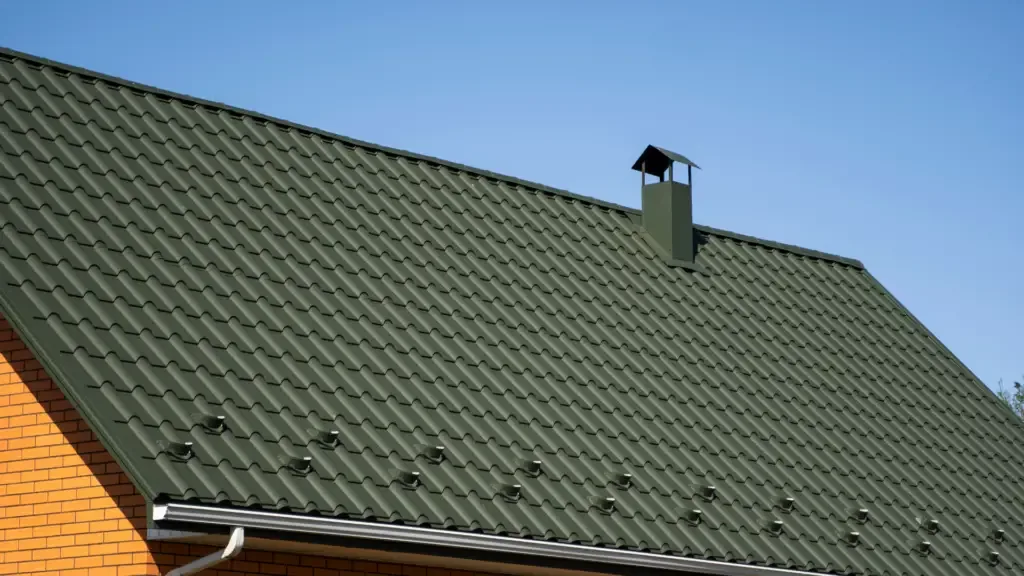
Warranties and Quality Assurance
When it comes to choosing a roofing material, warranties and quality assurance are important considerations. Polymer roofing offers a range of benefits, but it’s important to understand the warranties and quality assurance available for this type of roofing.
Polymer roofing materials are made from 100% recycled materials, but not all polymers are created equal. It’s important to ensure that the polymer roofing you choose is made from virgin resins and has UV stabilizers to ensure the longevity and performance of your roof.
In terms of warranties, it’s important to understand that warranties cannot be used as a substitute for proper analysis, system and material choice, application, and maintenance. However, a good warranty can provide protection in the event that the materials are defective.
ProCon Roofing offers workmanship warranties of up to 20 years, and we only use materials from top-tier suppliers like Firestone who offer their own full systems (material and labor) Red Shield Warranty of up to 30 years.
This means you can have peace of mind knowing that your polymer roofing is installed correctly and is backed by a solid warranty.
When it comes to quality assurance, the National Roofing Contractors Association (NRCA) provides best practice guidelines for assessing the application of built-up, polymer-modified bitumen, EPDM, and thermoplastic membrane roof systems.
Tremco Roofing also offers various warranty options and emphasizes the importance of proper analysis, system and material choice, application, and maintenance.
In summary, when choosing polymer roofing, it’s important to consider the warranties and quality assurance available. Look for virgin resins and UV stabilizers, and ensure that your roofing is installed correctly and backed by a solid warranty.
Installation and Professional Skills
Installing polymer roofing requires the skills of a professional roofing contractor. If you are not experienced in roofing, it is best to hire a professional to ensure that the installation is done correctly.
Here are some things to consider when hiring a professional:
- Look for a licensed and insured contractor with experience in installing polymer roofing.
- Ask for references and check their reviews online to ensure they have a good reputation.
- Get a written estimate that includes the cost of materials and labor.
The installation cost of polymer roofing varies depending on the size of your roof and the complexity of the installation. However, it is generally more affordable than traditional roofing materials like slate or tile.
Professional skills are essential for installing polymer roofing, as it requires precision and attention to detail. The following skills are necessary for a successful installation:
- Knowledge of roofing materials and installation techniques
- Experience with measuring and cutting roofing materials to fit the roof
- Ability to work safely at heights and follow safety protocols
- Attention to detail to ensure that the roof is installed correctly and looks aesthetically pleasing
In summary, hiring a professional roofing contractor with experience in polymer roofing installation is essential to ensure that your roof is installed correctly. The cost of installation is generally more affordable than traditional roofing materials, but it still requires professional skills and knowledge to ensure a successful installation.
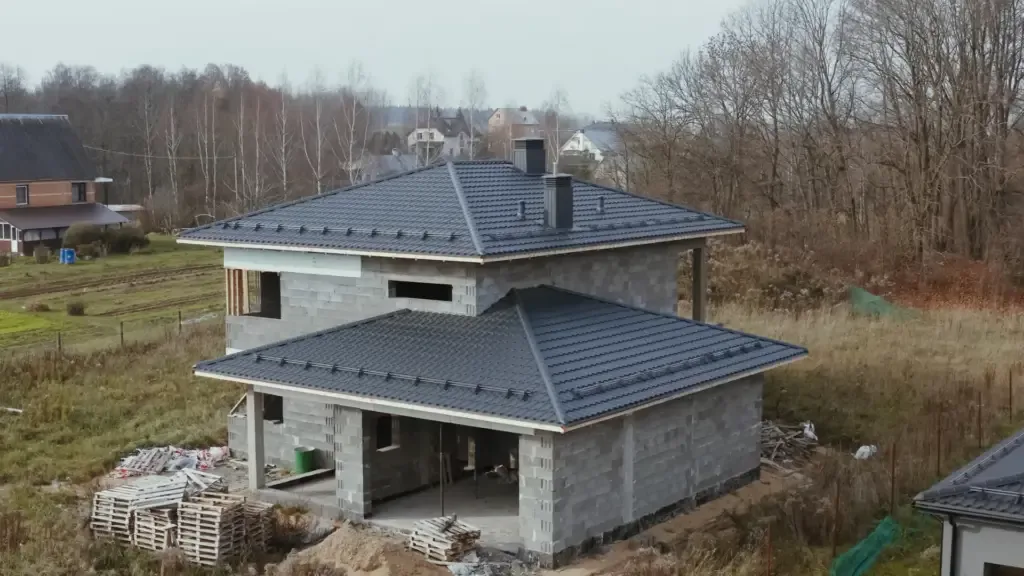
Conclusion
In conclusion, polymer roofing is a great option for those looking for a durable and long-lasting roofing material. It has many advantages, including being resistant to fire and extreme weather, tear-resistant, and not cracking under extreme weather conditions.
Additionally, it is porous, which means it absorbs and evaporates rainwater instead of allowing it to penetrate the roof deck, lowering the risk of rot and mold growth.
However, there are also some disadvantages to consider when choosing polymer roofing. It has not been used as a synthetic roofing material for as long as other materials, so it is difficult to predict how long it will last.
Additionally, it can be more expensive than other roofing materials, and it may not be suitable for all types of roofs.
If you are considering a new roof and are interested in polymer roofing, it is important to research and contact a reputable roofing contractor to discuss your options. They can provide you with more information about the pros and cons of polymer roofing and help you determine if it is the right choice for your home or business.
Overall, polymer roofing is a great option for those looking for a durable and long-lasting roofing material. However, it is important to carefully consider the pros and cons before making a decision.
Contact us today to learn more about polymer roofing and to discuss your roofing needs with our experts.
